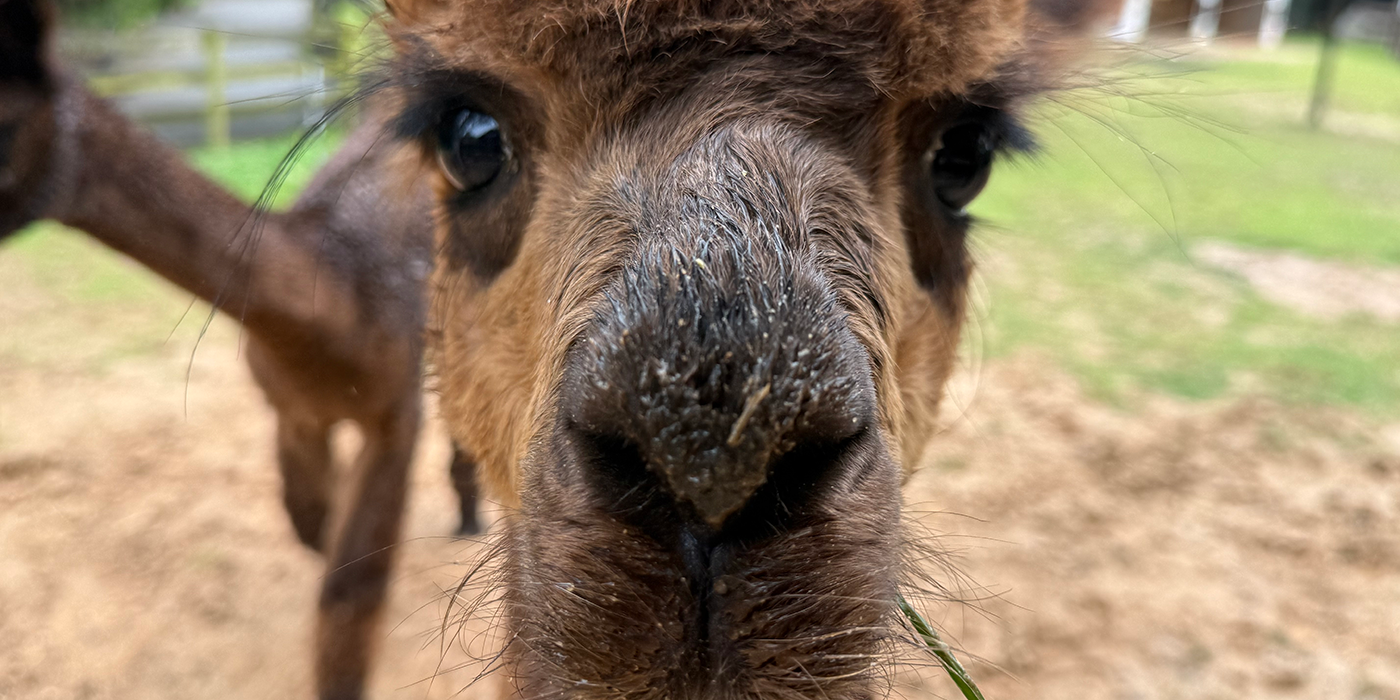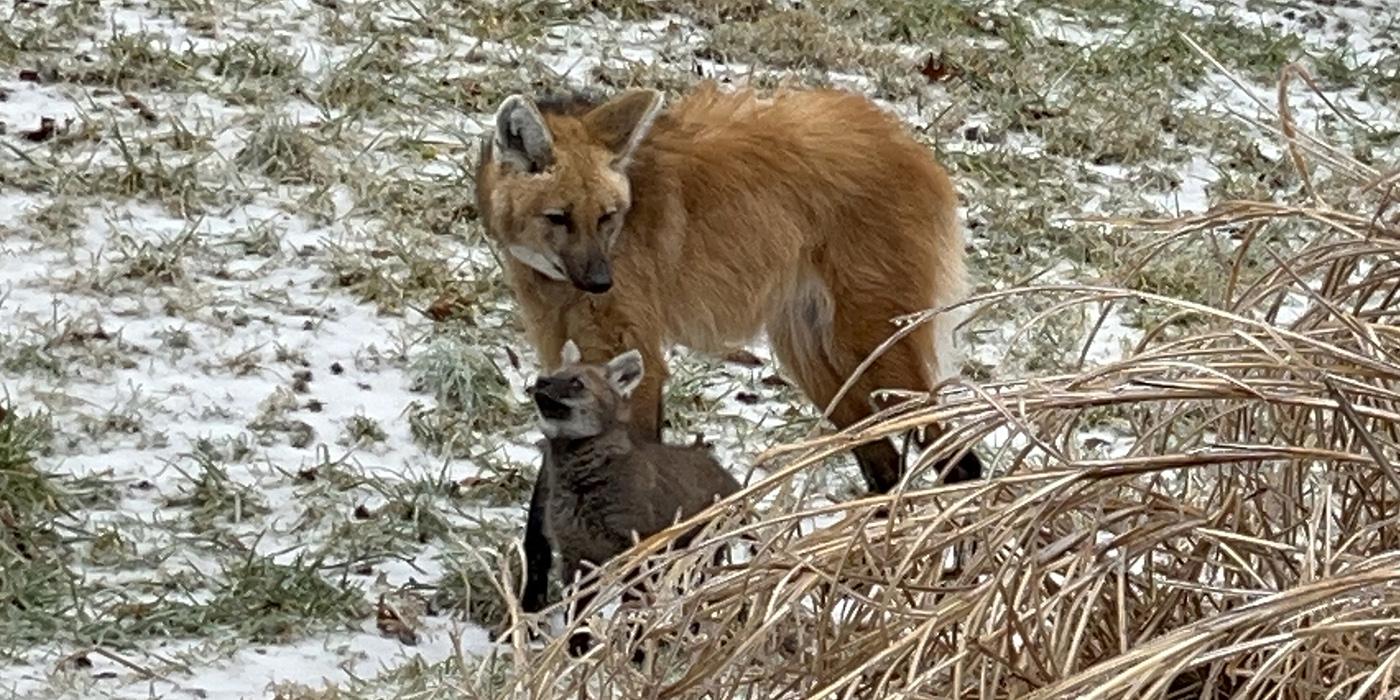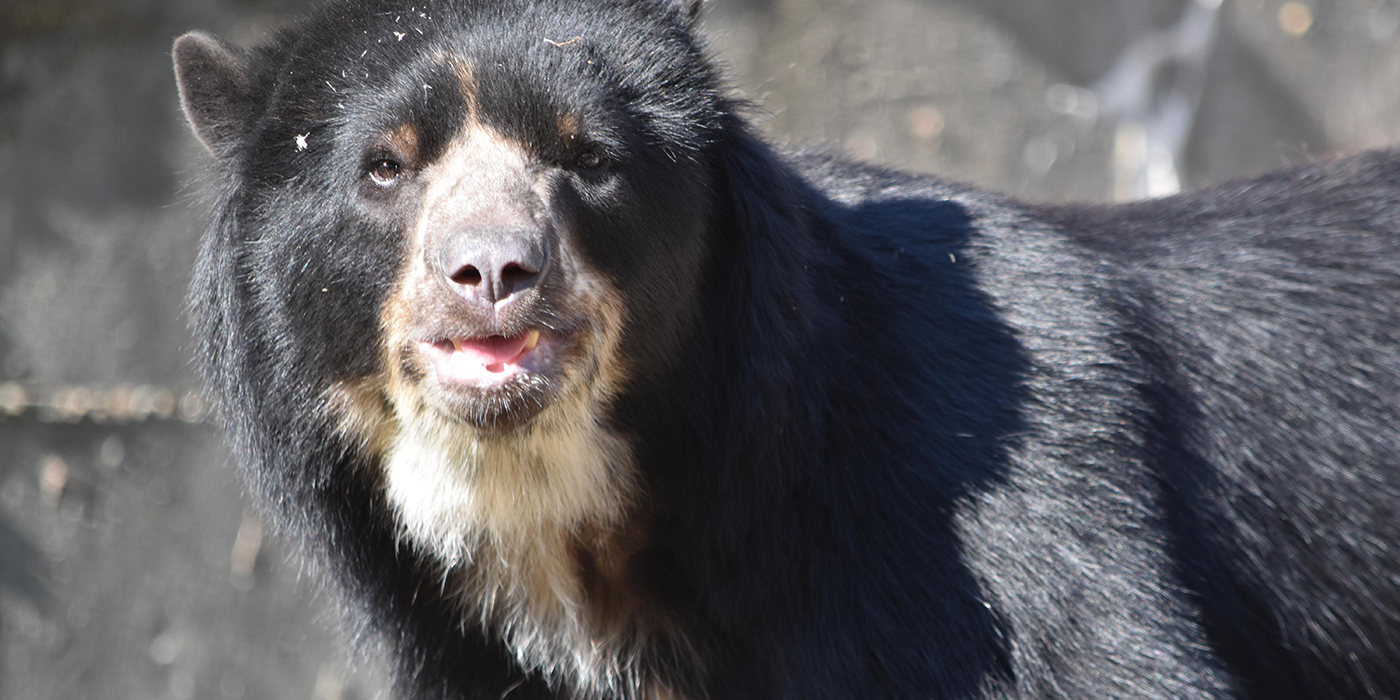Meet the Zoo’s Clouded Leopards
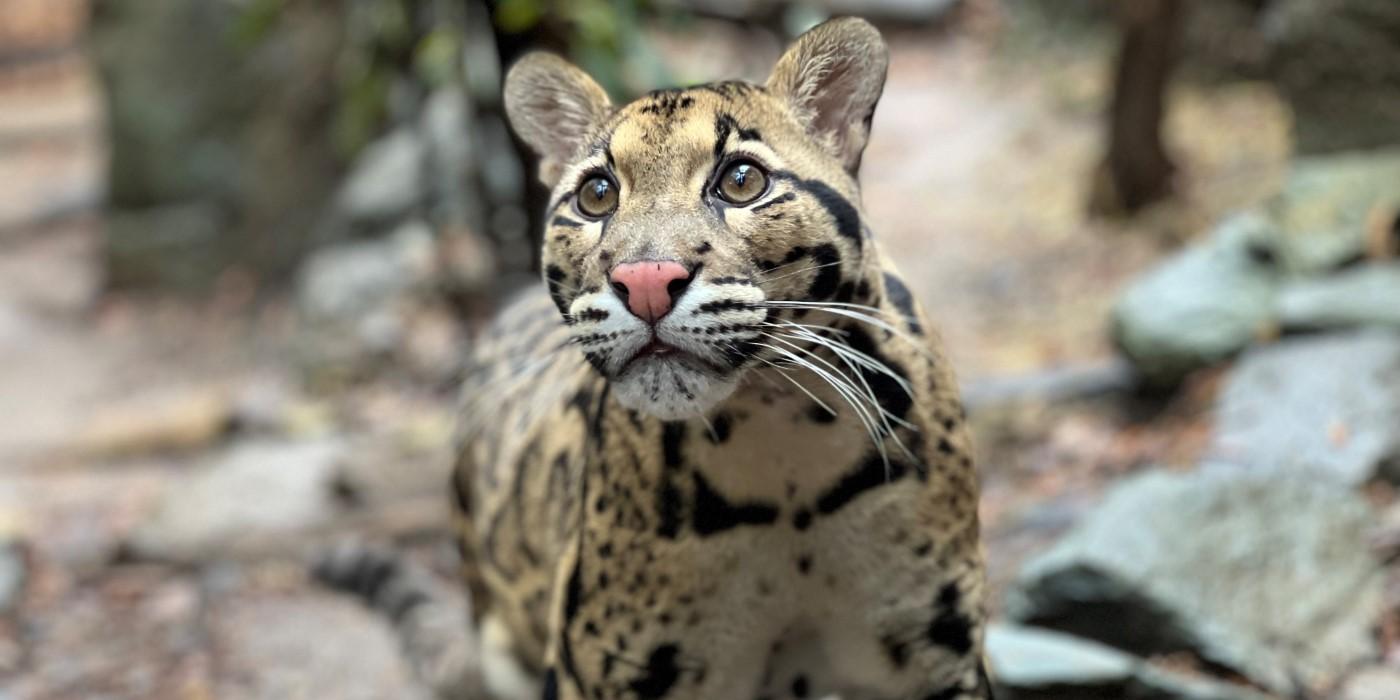
With their warm golden-hued eyes, coats that camouflage them in the tree canopy and cheery “chuff” greetings—there’s no denying clouded leopards’ charisma! Every Aug. 4, we celebrate Clouded Leopard Day to raise awareness of these vulnerable cats from Asia. Meet our animal ambassadors—and learn how you can help their wild cousins—in this update from Asia Trail keeper Kaitlyn Adkins, carnivore keeper Jessica Kordell and biologist Adrienne Crosier.
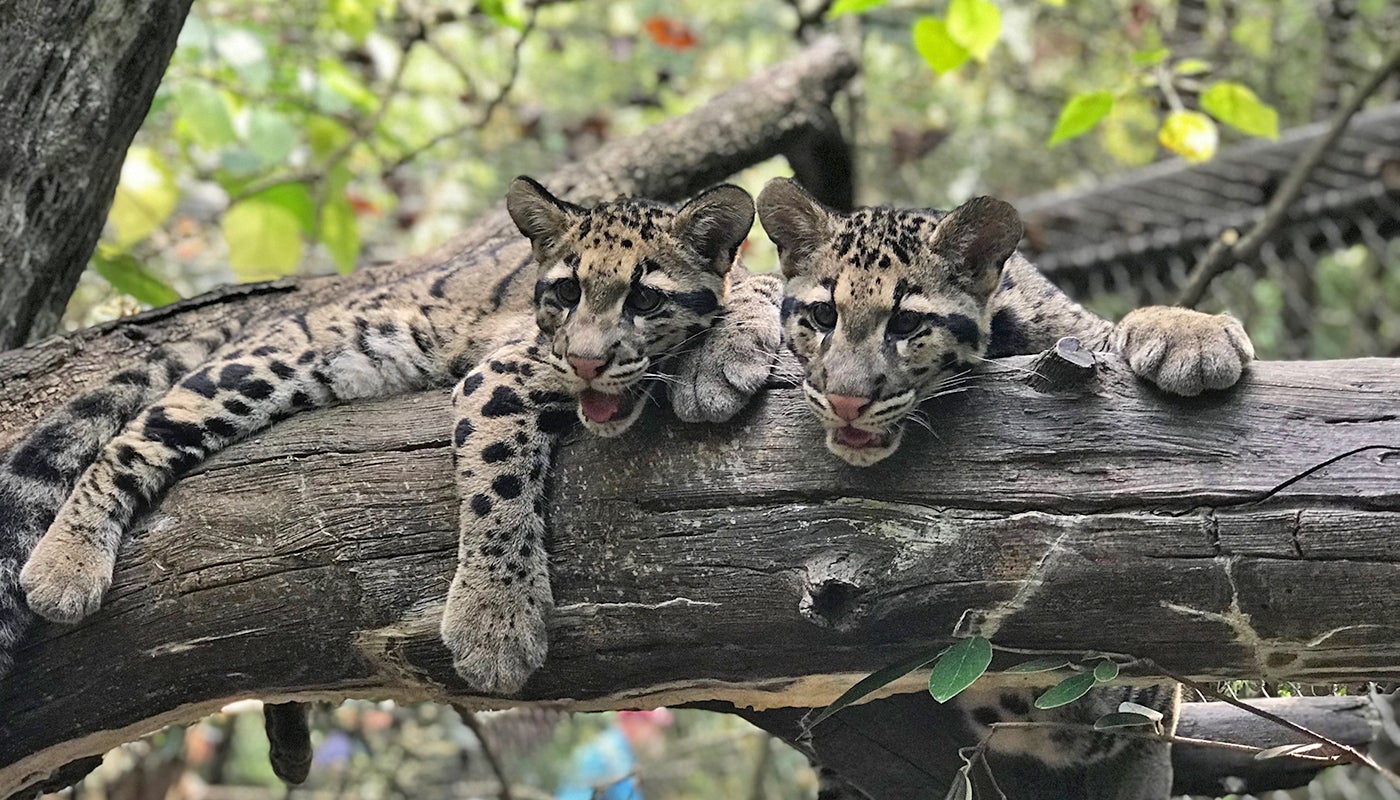
clouded leopard
Visitors can see clouded leopards Jilian and Paitoon at Asia Trail.
Meet the City Cats | Washington, D.C.
Adkins: Two clouded leopards live at the Smithsonian’s National Zoo and Conservation Biology Institute in the heart of the Nation’s Capital: Jilian and Paitoon.
Jilian, our female clouded leopard, is outgoing and enjoys interacting with keepers, especially during training sessions. She is very smart and quick to learn new behaviors that enable us to monitor her health. When we clean her enclosure, Jilian likes to “help” by chasing the broom! In the outdoor habitat, one of my favorite things to do is put all of her toys in tree branches, then watch her knock them all down.
While Jilian is a ball of energy, Paitoon is much more shy and steady. Although he may not catch on to new behaviors as quickly as Jilian, once he figures out what we’re asking him to do, he’s very solid in those behaviors. Because of his consistency, we’ve been able to train a lot of voluntary medical behaviors, such as injections and tail blood draws.
This past breeding season, we saw a lot of success in their communication. When Jilian indicates she doesn’t want to play, instead of pushing her, Paitoon will lay down and take a nap. Although Paitoon was very interested in Jilian, he would always listen to her and never become aggressive. This is very important in clouded leopards because due to their size difference, males can injure or kill a female during breeding or other interactions.
Meet the Country Cats | Front Royal, Virginia
Kordell: Four clouded leopards live at the Smithsonian Conservation Biology Institute: Tikka and Masala (our newest pair) and Ariel and Ta Moon.
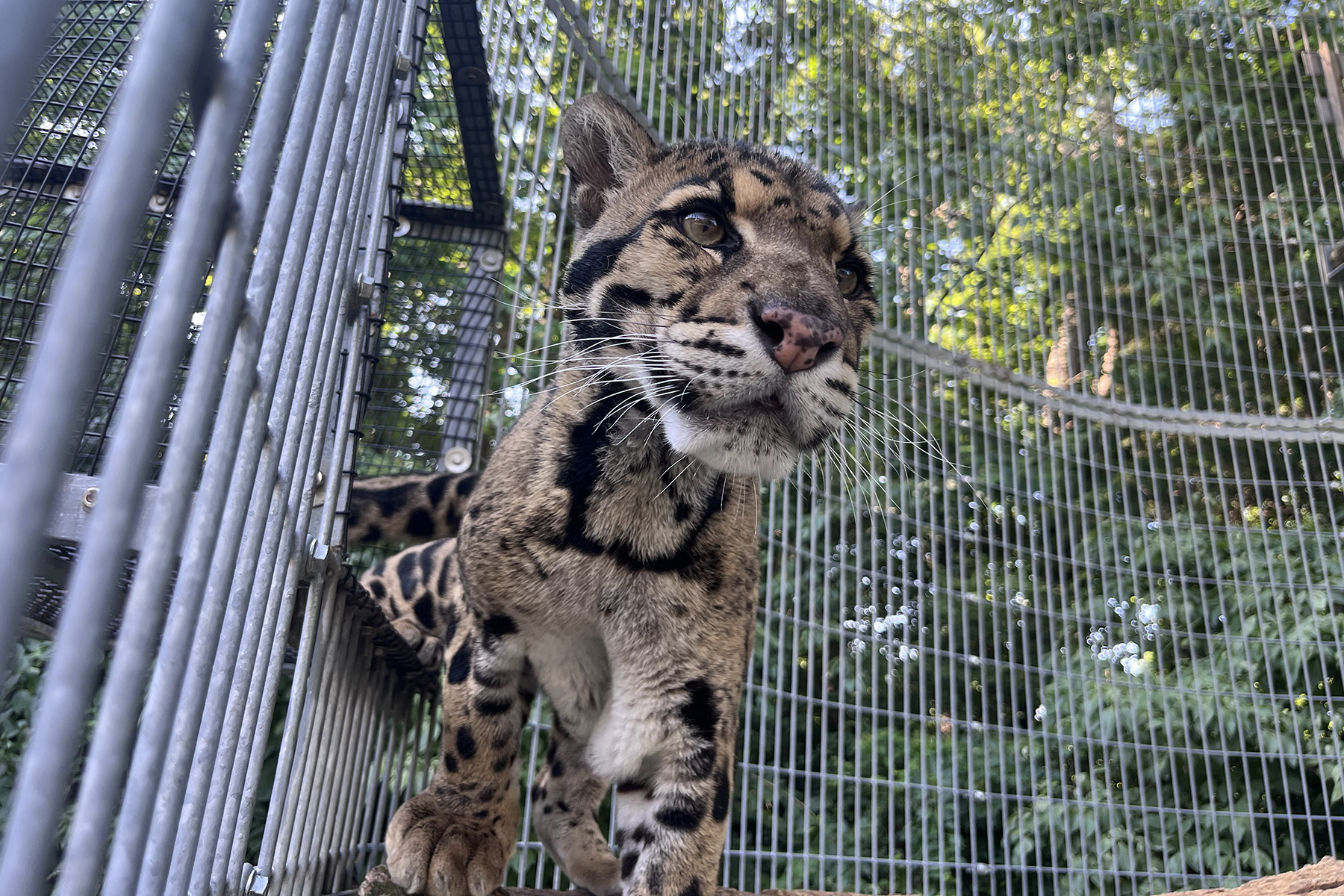
Clouded leopard Masala in his outdoor enclosure at the Smithsonian Conservation Biology Institute.
Tikka and Masala are a successful breeding pair who are strongly bonded. Female Tikka is timid and cautious around unknown people and situations that are out of the ordinary. It takes time for her to trust and get comfortable around the animal care team. Once she has warmed up, she becomes chatty and makes the sweetest sounding chuffs and squeaks. Male Masala is quite affectionate towards Tikka, greeting her with a chuff and grooming her. With keepers he tends to be impatient and demanding; he will growl and hiss at us while he’s waiting to be fed.
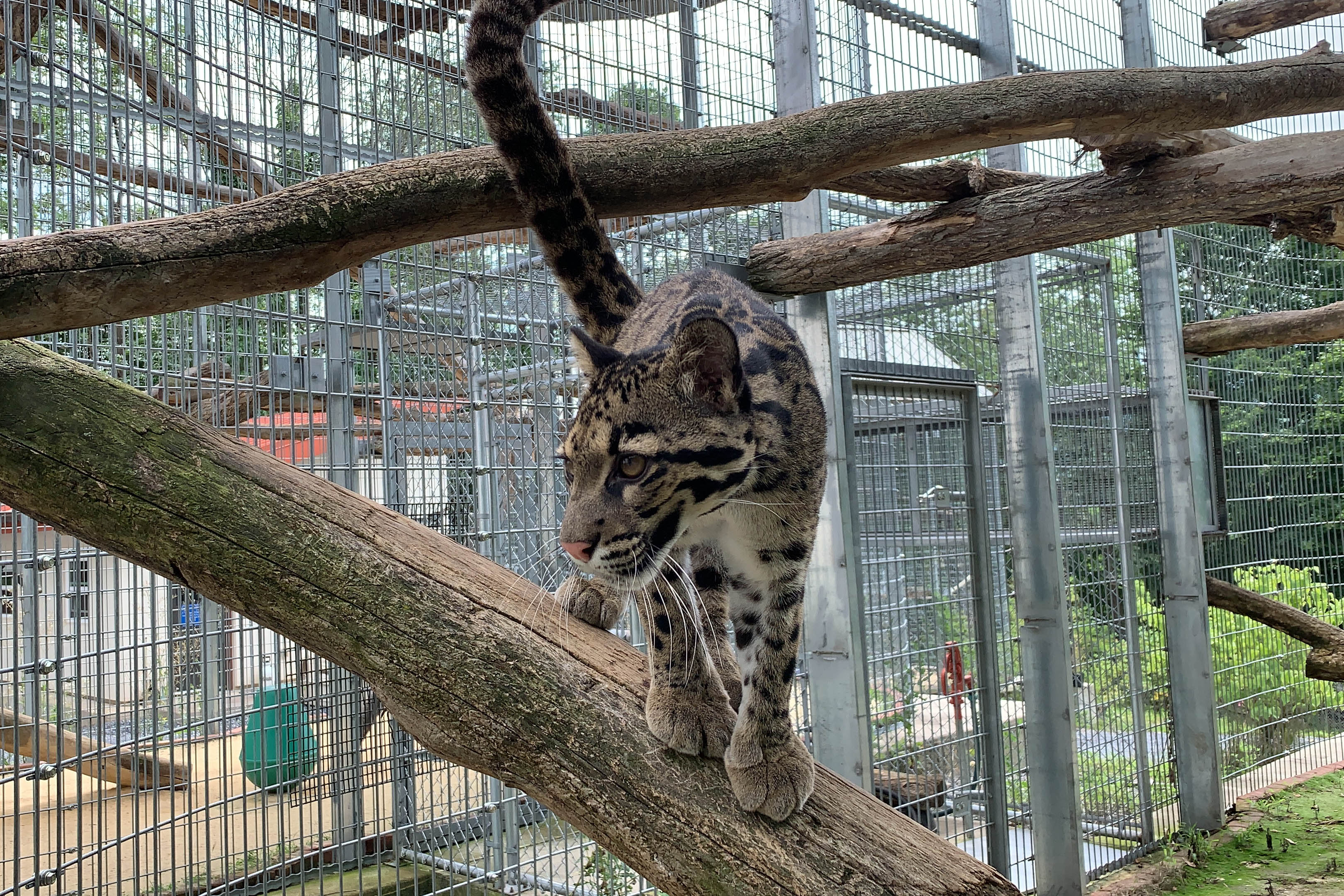
Ariel balances on branches in her outdoor enclosure.
Ariel seems to enjoy receiving attention from her keepers and has a timid, playful and quirky personality. Like Ariel, Ta Moon is calm and patient toward Ariel and his keepers. He tends to be steadfast and consistent in his training and is a bit more resilient than Ariel or Tikka when there are changes to their environment or daily routine.
Planning for Cubs in Washington, D.C.
Adkins: Both Jilian and Paitoon have several relatives in the North American clouded leopard populations. This means they are not the most important genetic pair in the Association of Zoos and Aquariums’ Species Survival Plan (SSP). The SSP scientists determine which animals to breed by considering their genetic makeup, nutritional and social needs, temperament and overall health. However, this presented us with an opportunity to participate in a SSP study on birth control implants in female clouded leopards.
Crosier: Felines excrete most steroid hormones—including estradiol and progestogens—in their feces. By studying estradiol concentrations over time, Zoo scientists can gain insight into the clouded leopards’ estrous cycles and estrus periods. They can also use urine to determine progestogen concentrations. However, it can be more challenging to collect than feces, since the samples need to be relatively clean and free of water to analyze accurately.
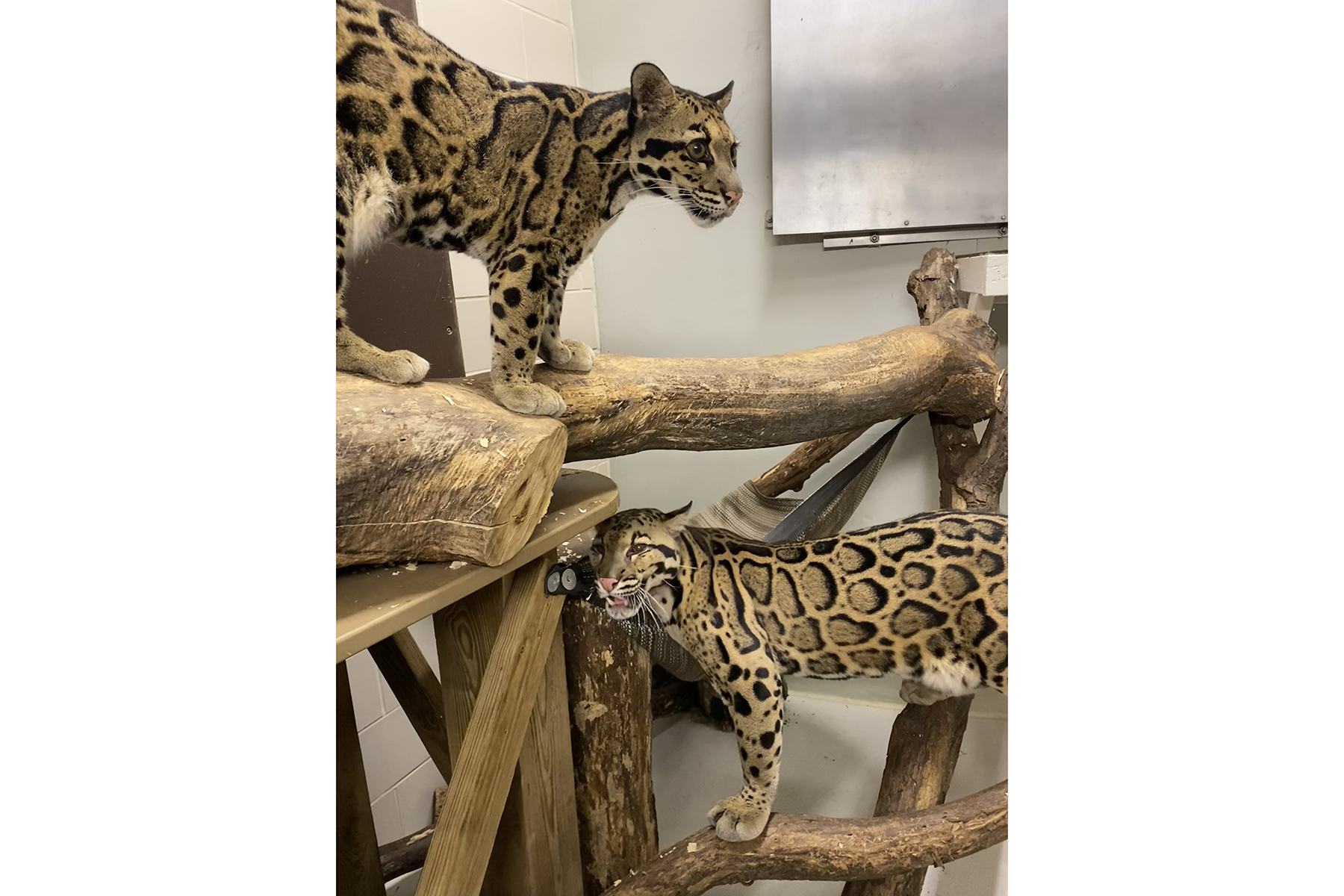
Jilian and Paitoon play in their indoor enclosure behind the scenes at Asia Trail.
Adkins: When Jilian was implanted with the birth control over the course of a year, we collected her fecal samples and sent them to the Zoo’s endocrinology lab to track her hormones. Now that the implant has been removed, we continue to track her hormones. We hope to learn if Jilian is able to successfully have cubs and how long it takes her to conceive after the implant has been removed. Ultimately, this information can help SSP scientists determine if a birth control implant a viable temporary option for females in human care.
Paitoon is our first indicator that Jilian may be going through a hormonal change. He can pick up on hormones in her urine and will behave more affiliative than normal towards her, chuffing at her constantly when she’s near. Jilian also becomes more affiliative, both to Paitoon and to her keepers. During these times, she is easily distracted during training sessions and isn’t as food motivated. Instead, she prefers to scent-mark all over the logs and trees in her habitat and roll around on the ground.
This past winter was the first significant breeding season for Jilian and Paitoon. We observed three cycles—three separate occurrences of three-to-five days of breeding attempts, usually about a month apart. We were excited because it was the first time we had seen some of this behavior from each of them! Unfortunately, breeding wasn’t successful this year, but we are happy that each cycle, their breeding behavior and communication improved. We are currently training Jilian to voluntarily participate in ultrasounds so we can monitor changes in her uterus and any potential cub development in the future.
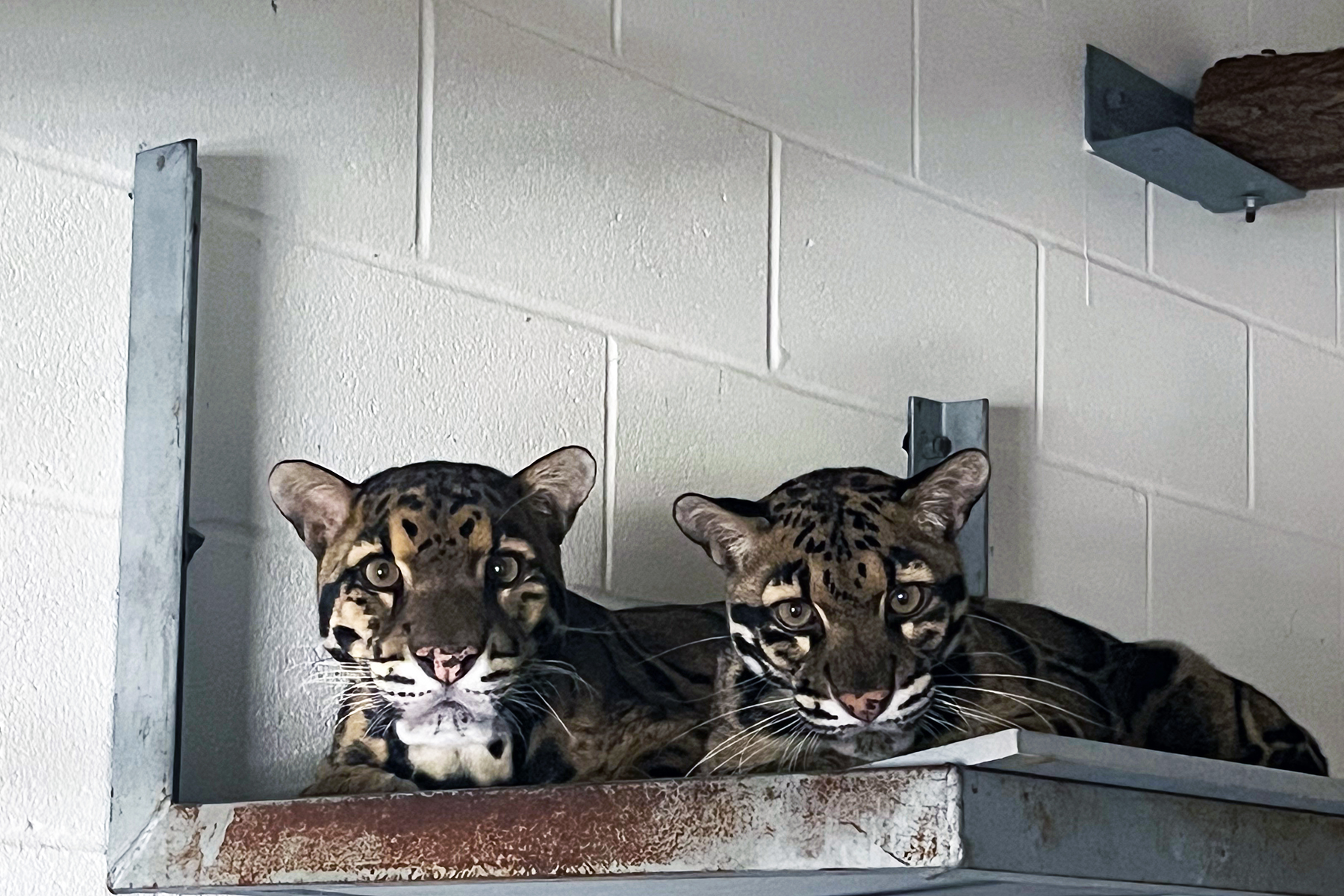
Masala (left) and Tikka snuggle in their indoor enclosure.
Planning for Cubs in Front Royal, Virginia
Kordell: Tikka had a birth control implant and was involved in the same study as Jilian. The implant was removed before she and Masala arrived here in March 2023. Once they were settled and adjusted, Tikka started cycling more regularly. She began exhibiting signs of estrus, including cheek and head rubbing around the entry of the adjacent enclosure, scent marking and rolling around. Although they bred in March 2024, subsequent hormone monitoring and radiographs determined that she was not pregnant.
Initial breeding introductions between Ariel and Ta Moon were somewhat promising. However, their relationship deteriorated quickly. Ariel suddenly appeared scared and would not let Ta Moon anywhere near her, no matter how patient and calm he was towards her. Because natural breeding wasn’t going to occur, we opted to do an artificial insemination on Ariel using sperm samples collected from Ta Moon's father, Hannibal. It was a valiant effort by our team but, unfortunately, she did not become pregnant.
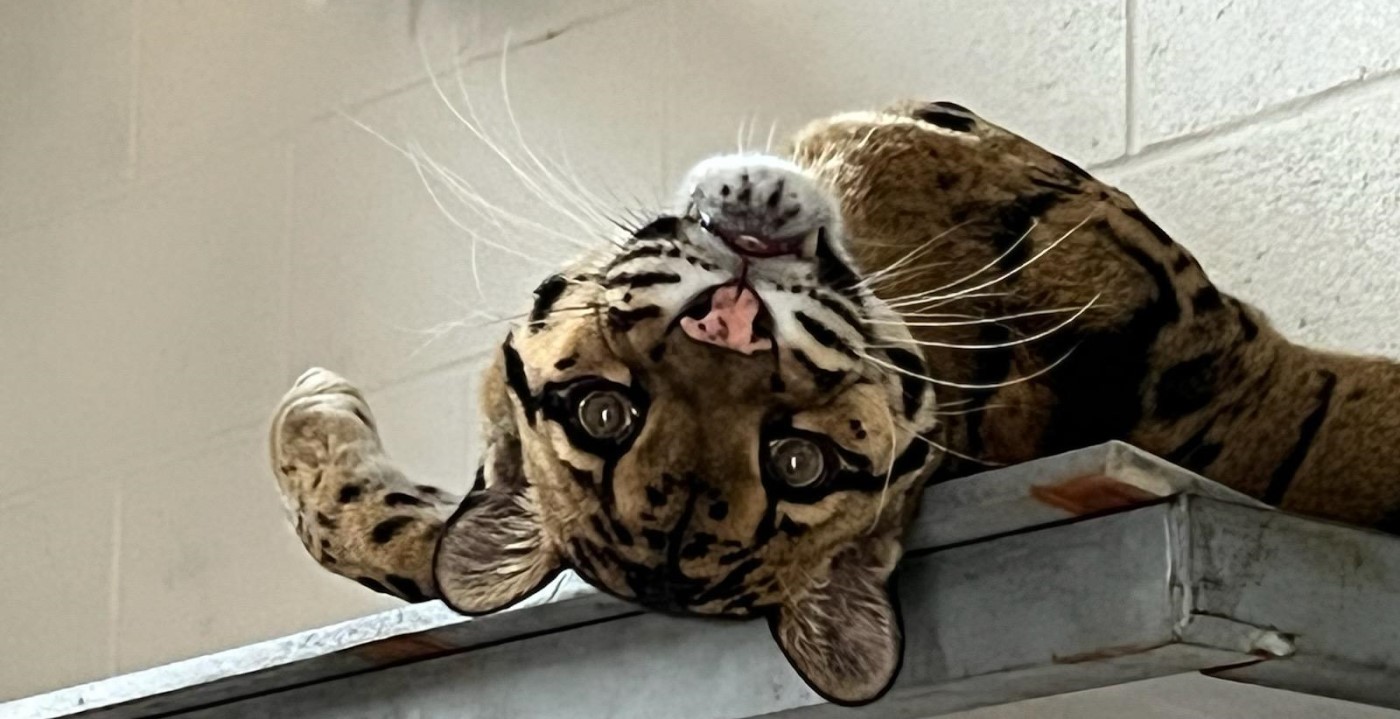
Ta Moon is calm and patient towards Ariel and his keepers.
Crosier: Artificial insemination in clouded leopards is still in the research stage, since their ovarian responses to the hormonal stimulation required for this procedure are unpredictable. The first successful clouded leopard artificial insemination was performed at Nashville Zoo in 1992 by SCBI scientist Dr. JoGayle Howard and Nashville Zoo president Rick Schwartz. The original technique utilized intrauterine sperm deposition. More recently, felid artificial insemination techniques have transitioned to intra-oviductal sperm deposition, which has yielded increased pregnancy success in several species.
Kordell: In 2015, SCBI scientists contributed to a successful birth using artificial insemination at the Khao Khew Open Zoo in Thailand. In 2017, SCBI and the Nashville Zoo collaborated to produce a female clouded leopard cub at the Tennessee facility using frozen/thawed semen. These accomplishments were a giant step for global conservation efforts. Our team is looking forward to seeing what the future holds for Tikka, Masala, Ariel and Ta Moon!
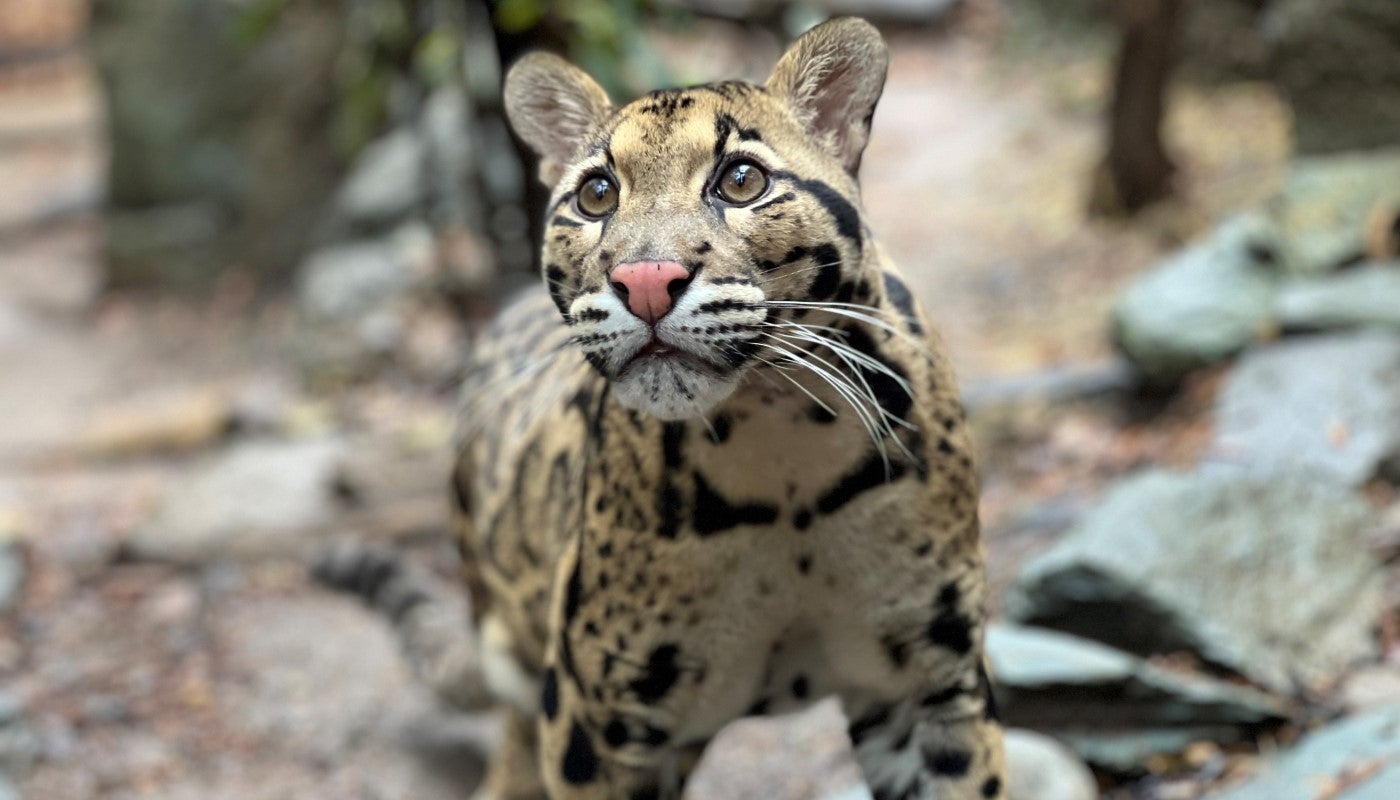
What sounds do clouded leopards make?
Kordell: Clouded leopards are unable to purr or roar due to the bone structure in their neck. They do make other vocalizations, though, such as growls, hisses and “chuffs”—a friendly greeting that sounds like a quick gust of wind!
Adkins: To chuff, they close their mouth an exhale through their nostrils. Usually, this greeting is accompanied with a slight head bob. They also “meow,” though it’s a smaller and higher-pitched chirp than the sound domestic cats make.
Ariel demonstrates her agility and ability to navigate tree branches.
Where do clouded leopards live?
Kordell: Clouded leopards are native to Thailand, Nepal, Bangladesh, Assam (eastern India), Sumatra, Borneo and China. They are arboreal and well adapted to life in the trees. They are most commonly found in lowland tropical rainforests, but have also been spotted in dry woodlands and mangrove swamps.
Adkins: These cats have large paws for gripping branches, specialized anklebones for ease of climbing up and down trees and long, thick tails that help them balance as they move through the canopy. They can also hang from branches completely upside down!
Clouded Leopards’ canine teeth are 2 inches in length—the longest of any cat relative to their body size.
What threats do clouded leopards face?
Adkins: There are less than 10,000 clouded leopards left in the world. Deforestation and fragmentation directly affect the habitats clouded leopards need to survive, as the areas they can exist in get smaller and further apart.
Kordell: It is a struggle they share with many species, including tigers, orangutans and Asian elephants. Additionally, they are often poached for their beautiful pelts and sizeable teeth. Wildlife traffickers often take cubs illegally from the wild, too, for the pet trade.
Keepers will give the clouded leopards novel toys to help sharpen the cats’ hunting skills, motivate them to explore their habitat, encourage problem solving and offer them choices in how to spend their time.
I want to help clouded leopards! What can I do?
Adkins: In protecting land for clouded leopards, you also protect thousands of other species that share their habitat. One way to help clouded leopards is to practice sustainable shopping — only purchase products that are palm oil free or use sustainable practices. And, when traveling, seek out opportunities that allow you to observe wildlife while supporting conservation efforts that aid these and other endangered species. So much of what we do has an impact. The time to affect change is now if we hope to have clouded leopards around for generations to come.
Related Species:

